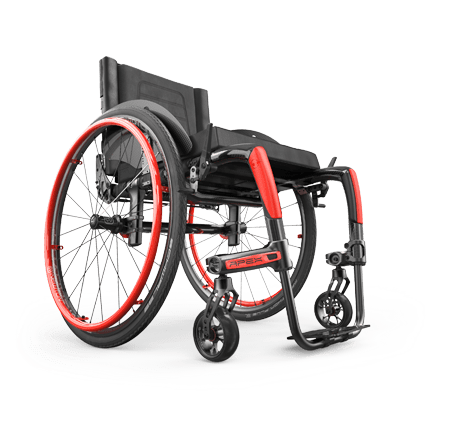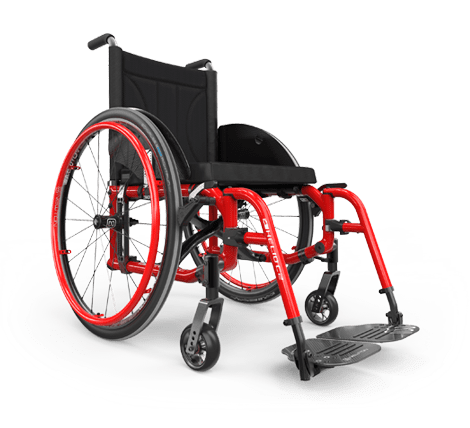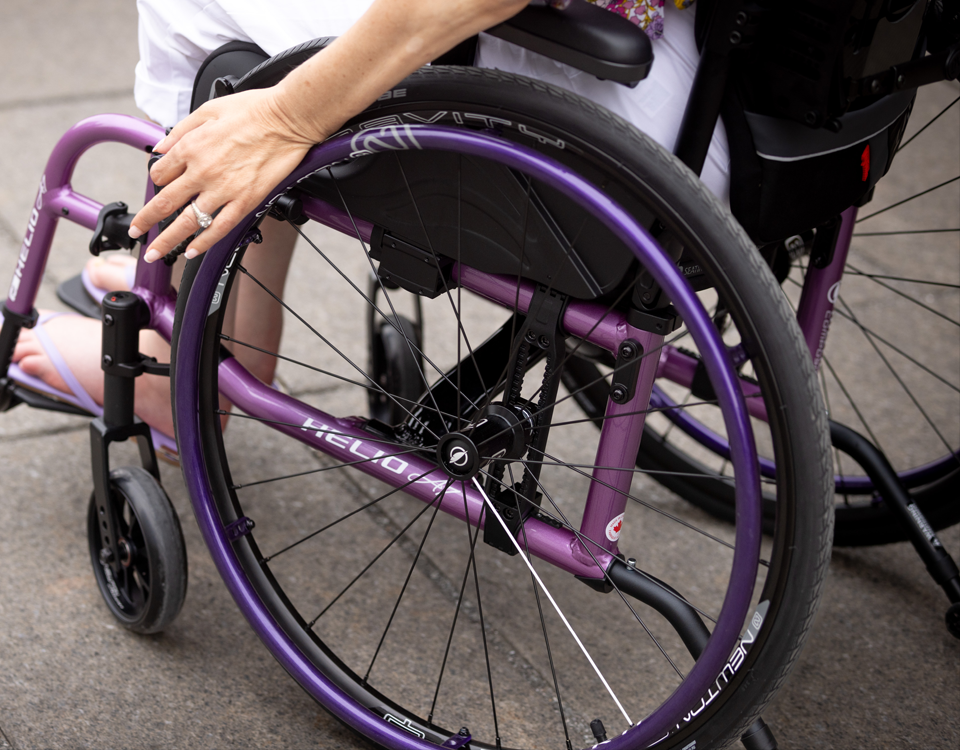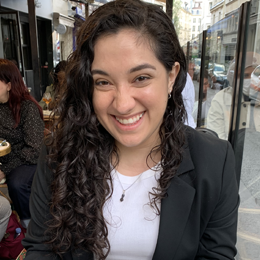The Wishes for Wheels program is a quarterly initiative dedicated to gifting lightweight, high-performance wheelchairs to individuals who would greatly benefit from having an ultralightweight custom-fitted wheelchair but who, for one reason or another, are not able to.
Today, we are meeting with our amazing Clinical Educator, Christie Hamstra, PT, MSPT, DPT, ATP, to discuss Motion Composites renewed and revamped Wishes for Wheels program and to discuss who can benefit from this program and the impact it can have on a wheelchair user’s life.

Interview:
Motion Composites: Since how long have you been involved with the Wishes for Wheels program?
Christie Hamstra: Since day one! I have been working for Motion Composites for almost 6 years now, and my first project when I joined the company was to help prepare and deliver a wheelchair to a Wishes for Wheels program winner in my area.
MC: Why is this program important to you?
CH: I enjoy being involved with wheelchair users and clients; I have missed the clinical part since becoming a Clinical Educator. So naturally, any opportunity that I get to interact with wheelchair users, I get very excited. I LOVE learning more about their stories and seeing how getting a wheelchair tailored to their needs has helped them. I get to see firsthand the impact a program like Wishes for Wheels program can have on their lives. This program can aid people who were in a wheelchair that was not tailored for them, or that was very heavy, or that was barely covering their needs, or not helping them get more from each push.
I love to see the immediate impact of this program on their lives. I can give you a great example from the first Wishes for Wheels program winner that I met. He had opted to go with a VELOCE carbon fiber wheelchair; I took his measurements and prepared the wheelchair. Then, the delivery day came, and he transferred to his new VELOCE. When we asked him to push himself, he did it so strongly that he ran into the wall!!! We were both super surprised to realize why this had happened. It was because he pushed himself with the same strength that he used on his old wheelchair. After seeing this, we HAD to weigh the difference between his old wheelchair and his new Wishes for Wheels wheelchair; the VELOCE was 19 pounds lighter!! I kept thinking about the HUGE difference that this weight difference would make for his day-to-day life, his energy levels, and his upper extremity health. It continues to surprise me that we were able to see a difference immediately, thanks to this wonderful program!
MC: Who would benefit from this program?
CH: Motion Composites has such unique products, with amazing and innovative materials, like carbon fiber. I believe many clinicians know the benefits of carbon fiber, such as it is lighter, has a higher strength-to-weight ratio over other wheelchair materials, and also has excellent vibration-damping properties that can reduce some of the road noise so that it does not get transferred onto the wheelchair user’s body. In short, Carbon Fiber is a great material, which we, as a manufacturer, are known for, but many clients in North America don’t have access to funding for it. So, most of the time, it won’t even be a part of the conversation as something they could benefit from.
Carbon fiber is a material that could make a big difference in someone’s life, so I would recommend applying to this program to anyone who:
- Needs an ultralightweight wheelchair and lacks access to funding for a carbon fiber chair.
- Needs a wheelchair that has a smooth ride – since carbon fiber can reduce road noise and consequently help reduce some of the pain.
- Experience a lot of spasms or spasticity – The vibration-damping properties of carbon fiber can help reduce the number of spasms.
- Needs a wheelchair that matches their active lifestyle and who needs a piece of mobility equipment that can help them get more of their day.
MC: There are other funding programs available for mobility equipment. What is the benefit of having a program like this?
CH: Within the United States, there is not much carbon fiber funding available at the moment. There is some legislation that hopefully can be approved soon, which will give people the choice, but there is still a way to go.
As for Canada, there is only a handful of provinces that accept funding for carbon fiber wheelchairs, even with justification.
However, many people would benefit from having a carbon fiber wheelchair but don’t have access to it because of funding limitations, and this program barely begins to fill that gap in the system.
It is super important for clinicians because the more people that go into a carbon fiber wheelchair, the more evidence shows why it should be justified and funded. Hopefully, this body of evidence can help change provincial funding and legislation so that everyone who needs an ultralightweight wheelchair to live their lives more fully can get one.
Motion Composites: What would you recommend to clinicians with a client who could benefit from this program?
CH: We want clinicians to be confident in discussing this program with their clients. It is the kind of program that could give their clients something that funding, with its limitations, can't.
I would suggest to clinicians that they show their clients the application on the Motion Composites website, encourage them to apply, and assist them if they need help filling out the application.
Remember, Wishes for Wheels happens every quarter, so just because their client was not selected does not mean that they can’t re-apply the following quarter. You never know!
MC: Why is it important that each wheelchair is tailored to the individual user’s needs?
CH: This is a great question! It is well proven, with evidence-based practice and clinical practice guidelines, that if a wheelchair doesn’t fit the person individually, this piece of equipment will not be as efficient as it should be. When it does not fit well, the user is also at a higher risk of injury (not just a musculoskeletal injury, but also a skin injury like skin breaking). Moreover, it simply doesn’t do what a piece of mobility equipment should do, which is to bring more independence to the user.
Their manual wheelchair should be an extension of their body and fit them properly so that they can do anything they want to do, without having to worry about the equipment.
MC: How significant can the impact be for a user receiving a wheelchair through the Wishes for Wheels program?
CH: It is a consolidated team effort, working together without having to worry about funding sources, whether they can afford it, or what kind of materials are available for them. It’s the Sales Representatives, clinicians, and dealers working together to give the wheelchair user (in many cases) their very first custom-fitted wheelchair. We can immediately see the effect of all the work that we have put together, and it is just amazing!
MC: What immediate health benefits might a client experience after receiving a wheelchair?
CH: Someone with a custom-fitted ultralightweight wheelchair can experience less pain throughout the day, have more energy (since they will be getting more with each push stroke), gain independence, and ultimately be able to do whatever they want to do in their day-to-day life.
MC: How can clinicians identify the clients who would benefit the most from receiving a wheelchair? Do you have any recommendations on this?
CH: I think a lot of it comes down to funding limitations. If a therapist sees that a client needs something more than what their basic and essential funding source can give them (i.e., they need something lighter, stronger, or more durable that will allow them to live freely), then those are the patients that therapists should recommend applying for this program.
We want to thank our friend and colleague Christie Hamstra for the time she dedicated to meeting with us and discussing the Wishes for Wheels program and its potential impact on the lives of anyone who benefits from it.
You can learn more about the Wishes for Wheels program here. Be sure to check the specific eligibility criteria here.
If you are a wheelchair user who is ready to submit your application, don’t hesitate any longer! You can apply here. Remember: If you are not selected this quarter, you can reapply in the following quarter.








